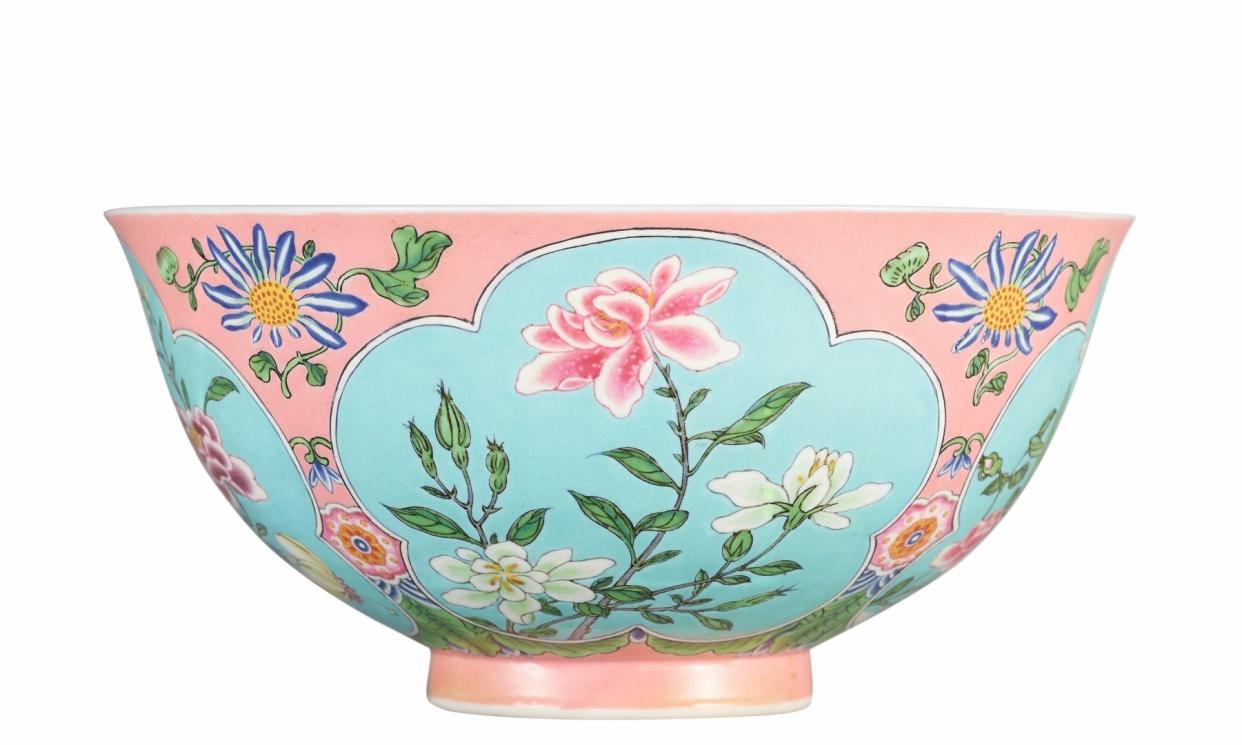Will This Ceramic Bowl Sell for $25 Million?

At the top auction houses, soaring hammer prices are par for the course. After all, Picasso's Golden Muse fetched $70 million at Sotheby's London last week—a major victory, though not completely unexpected, for the artist's legacy. But what about an object that can be held in two cupped hands?
Case in point: One spectacular ceramic is coming to auction through Sotheby's Hong Kong tagged with an estimate of $25.6 million, a potential record breaker for a Chinese ceramic work. The H.M. Knight Gold-Pink Falangcai bowl—which comes from the collection of Henry M. Knight—has not been seen on the market for over 30 years. The piece is no doubt captivating to look at, even without knowing its history. Glazed in a creamy pastel pink, the bowl features four pale turquoise quatrefoil lobes decorated with a variety of flowers. And it's extremely rare to acquire a work from this phase of Falangcai, the exclusive line of ceramics decorated at the Imperial workshops within the Forbidden City during the reign of the Kangxi emperor. This piece is one of the finest ever made for the emperor's personal use, and it can be traced back to Shanghai, 1930.
"The mark on the base, Kangxi yuzhi, makes it clear that it was destined to be used by the emperor only," explains Nicolas Chow—chairman of Sotheby’s Asia and the worldwide head and chairman of Sotheby’s Chinese works of art. "It is hard to tell whether he used it or just had it on display in one of his studios for his own enjoyment, but, from the condition, which is pristine, I would say that perhaps it was made solely to be appreciated."
It's well known that fine Chinese ceramics can be extremely valuable, and estimates in the millions are seen seasonally. But this particular bowl could shatter the record when it hits the block in Hong Kong on April 3.
The high price tag is mainly because of its rarity. "Falangcai was only produced in small quantities during a very short period in the later Kangxi period, and it took an extremely long time to master the firing of these new enamels introduced by European Jesuits," Chow explains. "These new enamels, a ruby enamel derived from colloidal gold and a lead arsenate white enamel, allowed the shading of existing colors into a myriad of new pastel tones, and were hailed as the last great development in the long history of Chinese ceramics, and Falangcai wares are the finest and earliest type."
Aside from condition, period, and technical skill, provenance is paramount when it comes to Chinese ceramics. Hailing from the collection of Henry M. Knight—who Chow describes as "a most discriminating collector" who focused on works from the Ming and Qing porcelains—is another selling point. When top collectors have housed a Chinese ceramic work, it often adds to its value at auction and beyond. It appears, for this little bowl, the stars have aligned quite well.

